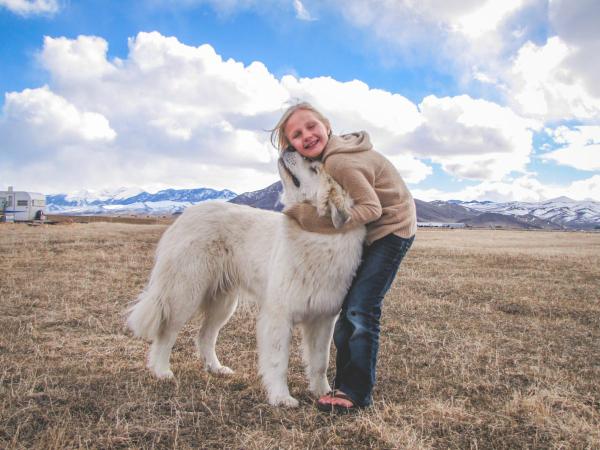
“Put your hands where they can see them, and FREEZE!” I brusquely commanded the man who stood in the lane in front of our ranch house in the frosty morning air. His fully camouflaged person stopped midstride, and froze, just as our two Great Pyrenees stock guardian dogs descended on him, circling with teeth bared and hackles raised.
“Don’t move, and keep your hands out.”
“Okay.”
I had watched the unraveling from my breakfast table. I could see the dogs returning from their night time rounds from one direction as the hunter, unaware of the big dogs, approached from the other. They were going to meet up right in front of my house. I raced to the front door and yelled just as the dogs spotted him. Walking across the lawn in my stocking-ed feet, I talked to the dogs and told them it was OK. They enlarged their circle to include me, still wary. I was still a little adrenaline-spiked from intervening with the dogs, so I wasn’t as nice as I could be when I asked what he was doing on the ranch. There was no vehicle in sight, and we live a good half mile from the road in any direction. He had obviously been on foot for some time on the property and had apparently missed or ignored our signage about not hunting without permission.
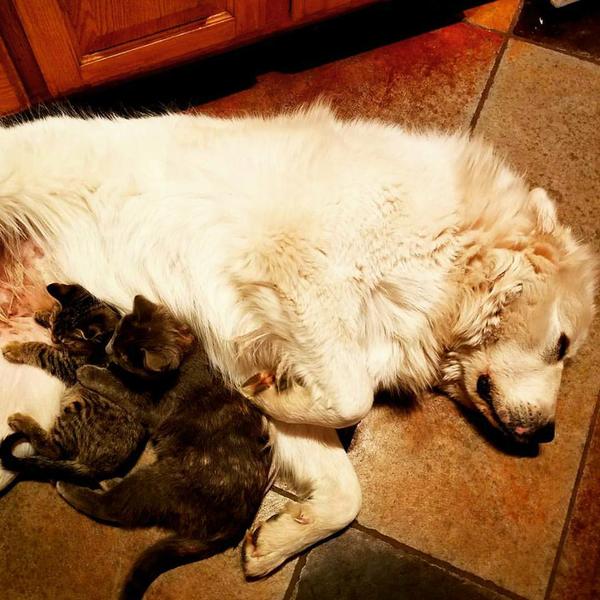
It’s hunting season, and there are a lot of hunters around. We almost always have a hunter trying to harvest one of the hundreds of whitetail deer or elk that frequent our ranch, but I only let one in at a time for the simple reasons of human safety and animal harassment. Too many hunters, and the wild animals never get to rest and graze. With only one person stalking game on hundreds of acres, the animals we share our land with get to live their lives in relative peace, while we achieve the needed goal of keeping our ranch from getting overrun by the wild ungulates. There are simply not enough wild predators like wolves and mountain lions here to keep their numbers down (those carnivores thrive in more remote mountain ranges that surround our valley).
We don’t charge for the right to hunt; we just expect someone to ask permission. In these days of smart phones, anyone can access public tax records and online maps and know exactly where they are and who owns the property they stand on. They simply have no excuse not to have done their due diligence.
Just a couple of weeks ago, a trail-cam on our place down by the river that was photographing the movements of a mountain lion just a half mile from our home also caught a trespassing poacher in its lens. I tried to prosecute him with the help of a conservation officer, but we couldn’t identify him well enough (the photo was from behind his back). As a result, he went free and continues in his quest to steal wildlife.
My front yard hunter was still a little rattled, and still held his hands out until I reached out mine to shake one of his. I introduced myself. He began to calm down.
“I came across the river bottoms and was hoping I could pursue a nice buck I saw on to your ranch, he stated as he nervously watched the dogs continue their silent circle. My dogs have never actually bitten or attacked anyone, but sure can look intimidating. I could almost feel my daughters and wife watching happily from our log home’s windows, cheering the big white dogs on as they kept intruder at bay. We live in the middle of nowhere, and for the females in my home, the big dogs are their white-robed guardians of the night. It makes them rest easy, even if I am not home.
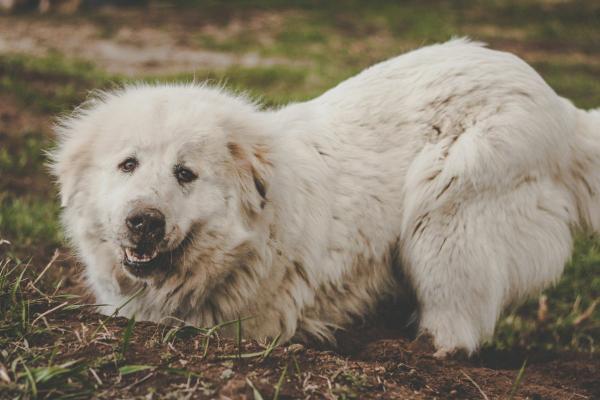
I gave the fellow my phone number and advised him to contact me very early in 2019. “I’d be happy to let you hunt, but it’s first come first serve.”
Few of the hunters who hunt on the ranch are avid sport hunters. Instead, most of them are like most of the folks who partner with us in our ranching endeavor and purchase our grass fed beef. They are simply looking to harvest some wild protein to feed their families.
And I couldn’t agree with them more. They, too, are dissatisfied and disappointed with the protein supplied by the current flawed beef production model. Our customers (rather, partners) have become a sort of virtual hunter in a long-distance sort of way, getting to know us and the landscape we learn from and live on. In a sense, with their investment of wild protein, they have become part of the circle of life in this ecosystem. They have made a firm connection in their flavor and wellness investment to the biome of soil that our wild beeves walk upon.
*****************************
Last night, I stepped outside after a long and refreshing day at a holistic grazing conference in Albuquerque, New Mexico. There were hundreds of like-minded practitioners of pasture-based agriculture there. We forged connections in the work of what I hope is the future of food. It was an encouraging time for me meeting practitioners of holistic agriculture from all over the country.
As I walked through the Old Town in the fading light on my way back to my hotel (the conference hotel was pretty expensive, so I found a cheaper one within a mile that I could walk to), I looked at the 1700s era adobe buildings in the square or La Plaza. Braided and drying chili peppers, or ristras swung in the wind from porticos and doorposts. Here, I thought was a culture founded on the wild landscape on which it lived. These ancient (for North America) buildings have seen dramatic change. They were built on a prehistoric culture that found health from ancient heirloom produce and pastoralism.
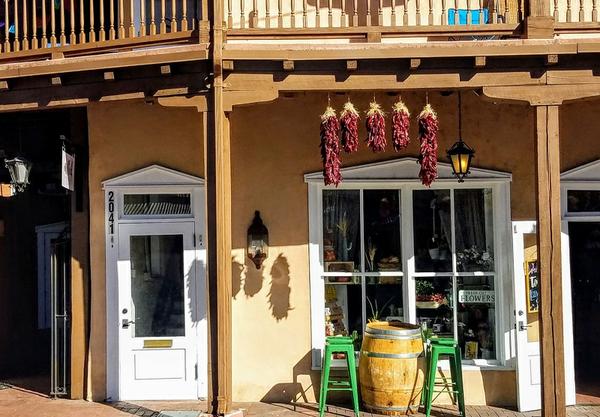
Some of my new friends happened by as I walked the narrow streets. “Care to join us for dinner, Glenn?” It was Brian, a kindred grass fed organic rancher friend from central Alberta, Canada. Like us, his family had found flavor and wellness from his wild bush country soils high on the near-boreal Canadian Shield.
We stepped into the low ceilinged and old log and adobe building for Mexican style food (I had hopes that it was authentic as I rarely eat out). I had to bend my tall frame as I doubled down through the adobe and log archways that separated the many dimly lit puebloesque rooms.
Although the food seemed authentic and fairly free of empty carbs, all of us at the table lamented about the meat in our respective dishes. All of it tasted only of the seasonings on it; certainly, it was tender, but it lacked the beefy, or animal flavor we all were quite used to on our own ranches.
We parted ways after great company and lots of laughter, and I continued my way alone in the lamplight through the old city. As I dodged the swinging ristras on the way under the adobe porticoes while walking along the quiet streets, I wondered if those drying chilies were perhaps the only traditional real food that remained through this city’s journey away from the land.
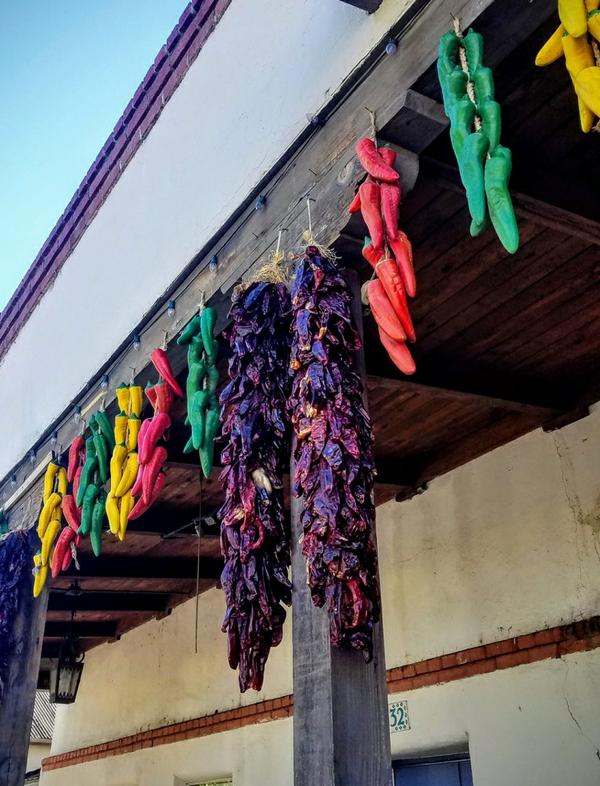 And I thought about how the conference, although encouraging and inspiring, was in some ways a bit discouraging. This is one of the bigger sustainable agriculture conferences, and there were a few hundred people there, from all over the country. That’s great, but I wish there were a lot more; there is so much work to do.
And I thought about how the conference, although encouraging and inspiring, was in some ways a bit discouraging. This is one of the bigger sustainable agriculture conferences, and there were a few hundred people there, from all over the country. That’s great, but I wish there were a lot more; there is so much work to do.
Although we can’t go back to the 1700s, we can create new relationships with wild landscapes and the soil under it moving forward. And I think as more people like you learn that the food from these systems is life-giving, both to people and planet, I have hope that more farmers and ranchers will start coming to these conferences to learn how to serve those people. You are an important part of that, on the vanguard as it were. And together, we can tell others about real food with flavor and nutrition…and an origin that is rich with relationship and story.
Wishing you the best on your journey; happy trails!
Glenn, Caryl, Girls and Cowhands at Alderspring

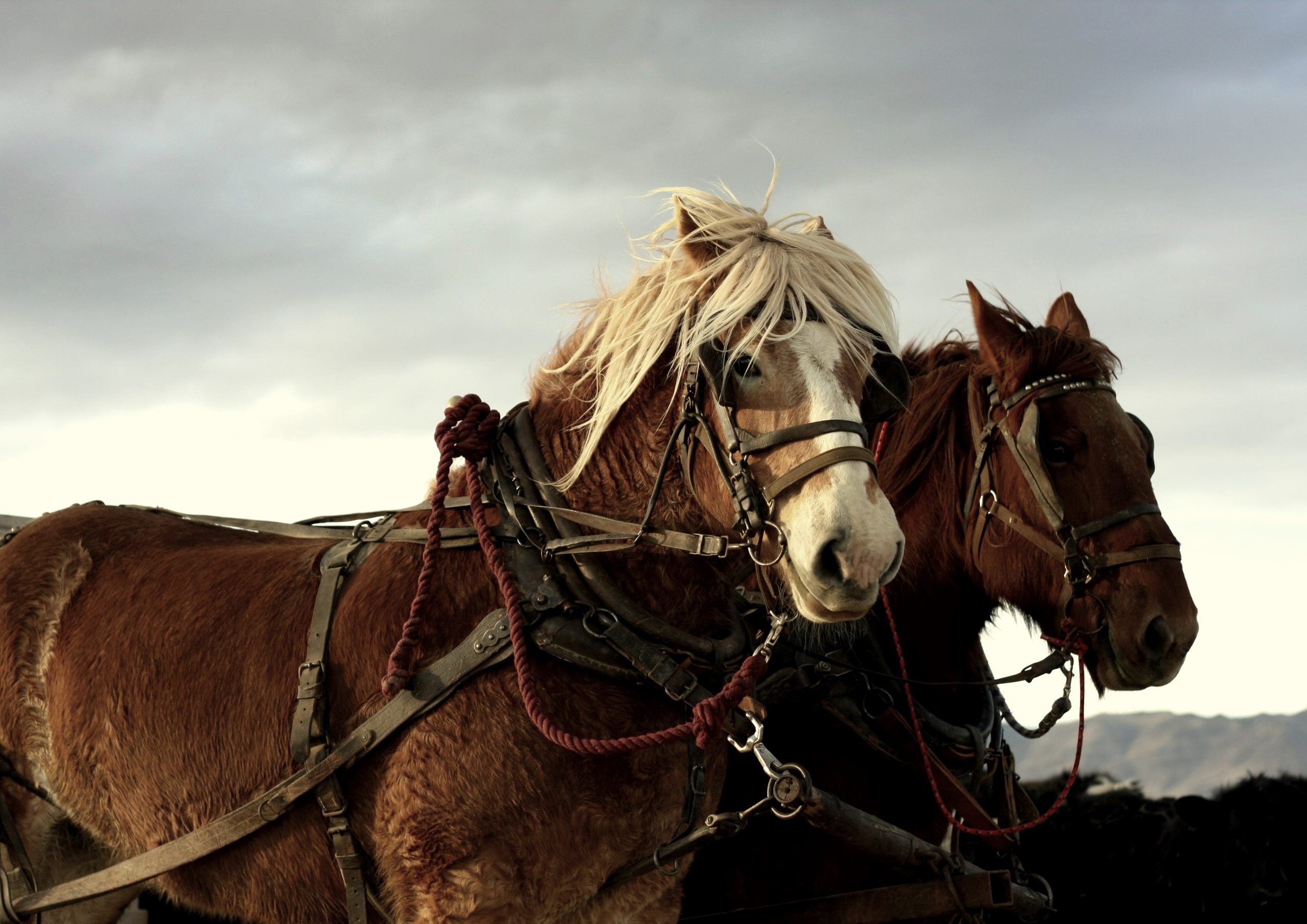
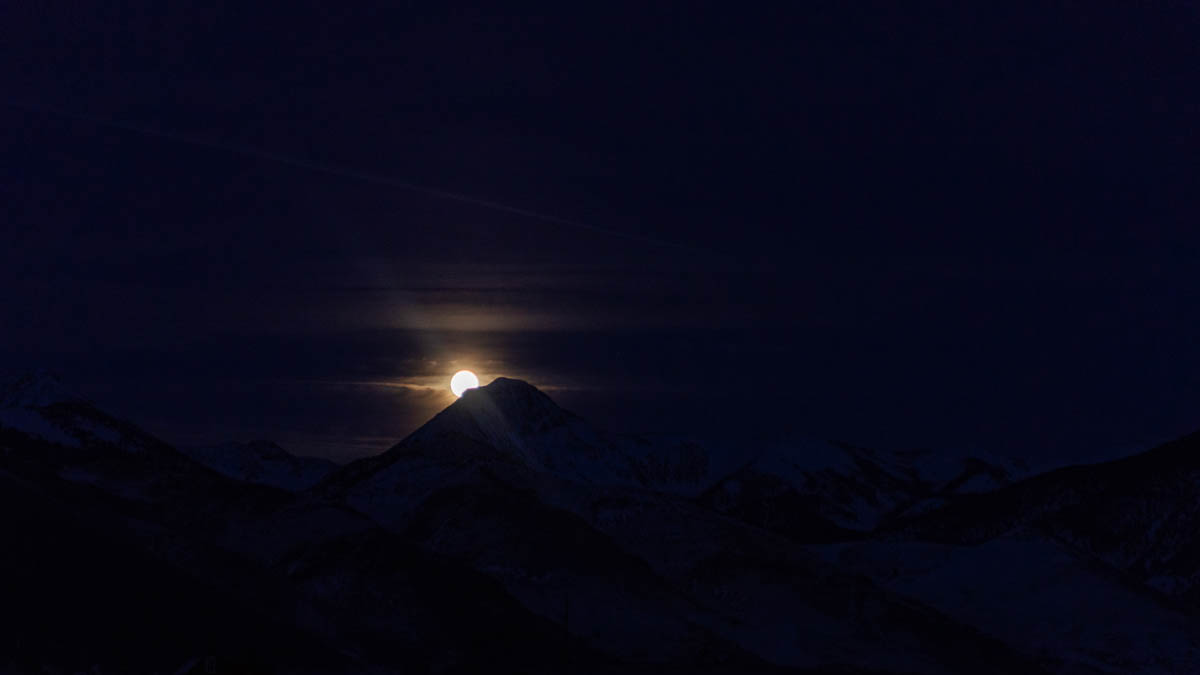
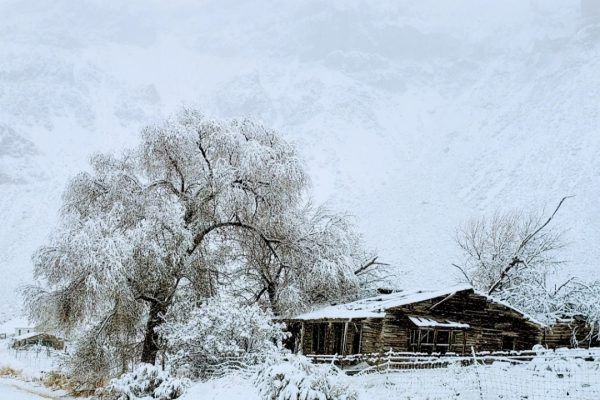
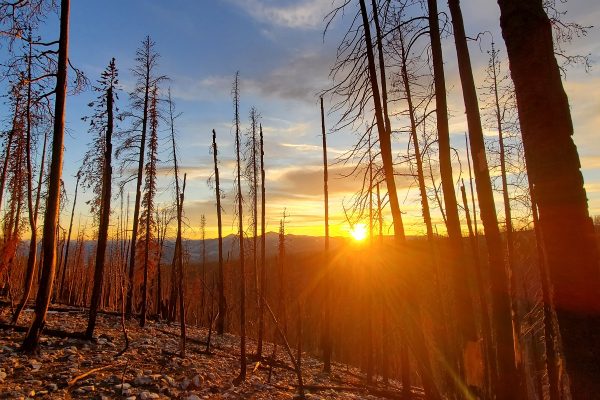
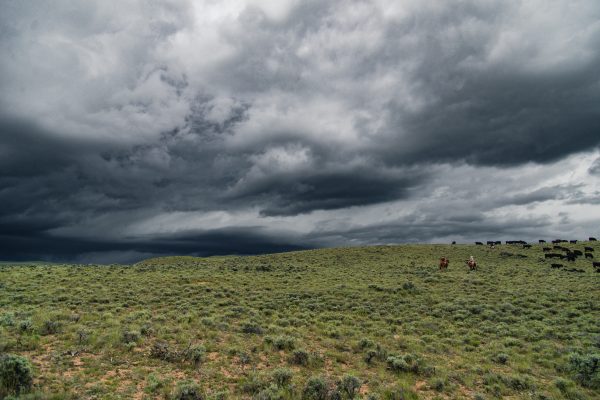
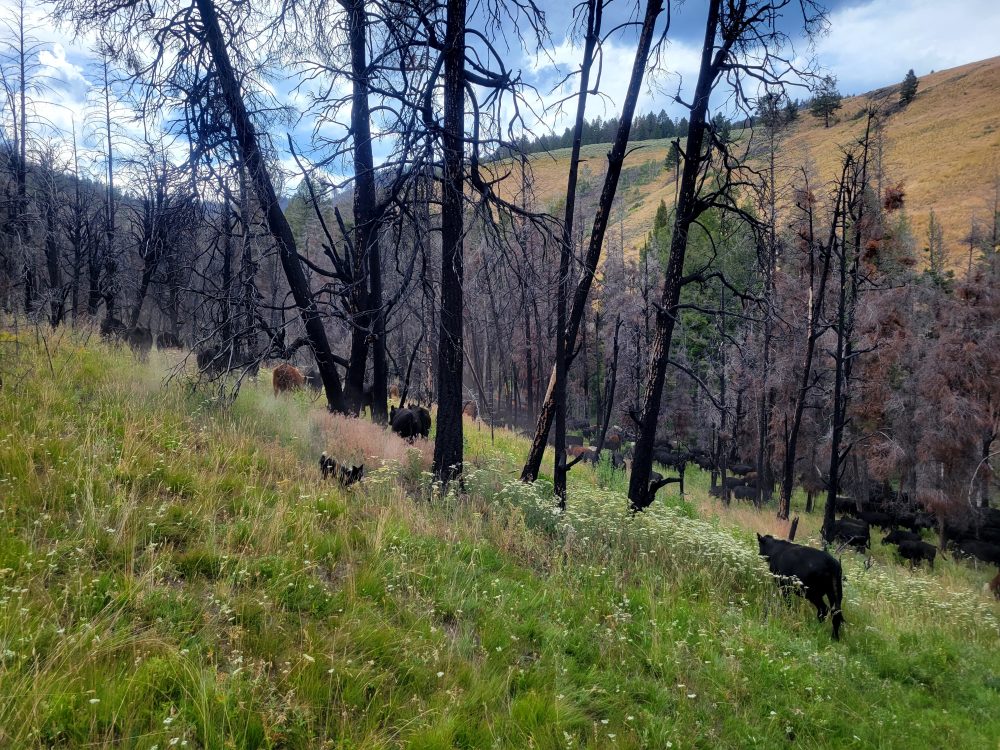
Leo G Younger
Please try an online search, for Albuquerque NM organic food. There are many listings of best places, including stores and restaurants. You needn’t settle for less than what you want. Hoping doesn’t make it so. If bringing food from home isn’t enough, there’s always water and salt fasting. I’d rather starve than eat bad food, and have experienced fasting for many days, even weeks, with extremely little food of any kind, because of commitment to organic food. Convenience, after all, is what’s driven the unfortunate acceptance of non-organic food. There’s no such thing as coexistence with GMOs. The chemical people have the goal of total control of all seed, all life, including all of us.
Shirley
That’s real dedication, Leo! I’m almost as strict as you, but I kind of go by the 90/10 Rule. If 90% of what I eat is organic, then once in awhile or 10% is ok to eat. Then I get right back on my “clean food.” When I travel, I take organic food with me and never ever drink anything from plastic or that’s full of sweeteners/sugar. I take a water purifier with me. It really shouldn’t be this hard to find good clean organic food.